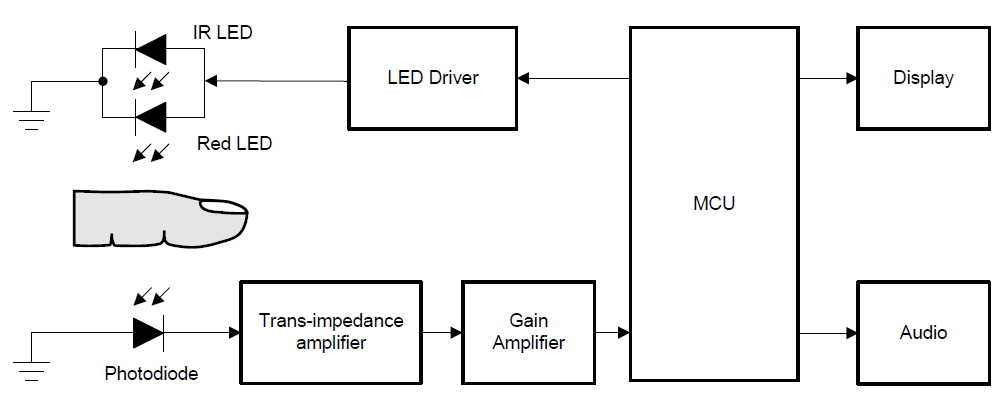SLAAE25 May 2021 MSP430FR2355 , MSP430FR2355
2 Theory of Operation
A pulse oximeter is a non-invasive device used to monitor the pulse rate and peripheral oxygen saturation (SpO2 %) of blood.
In a pulse oximeter, the calculation of the level of oxygenation of blood (SpO2) is based on measuring the intensity of light that has been attenuated by body tissue. SpO2 is defined as the ratio of the level oxygenated hemoglobin (HbO2) over the total hemoglobin level (oxygenated hemoglobin and de-oxygenated hemoglobin (Hb)):

In principle, the HbO2 and Hb respond differently to different wavelengths of light. Hb absorbs more red light compared to infrared (IR) light, whereas, HbO2 absorbs more infrared light. As shown in Figure 2-1, when Red and IR Light Emitting Diodes (LEDs) are driven alternately through a finger, the unabsorbed light received at the other end of the finger (where a photodiode is used as the sensing element) corresponds to the concentration of Hb and HbO2 in the blood.
 Figure 2-1 Block Diagram of Pulse
Oximeter
Figure 2-1 Block Diagram of Pulse
OximeterThus, two different wavelengths of light are used, each is turned on and measured alternately. By using two different wavelengths, the mathematical complexity of measurement can be reduced.

Where λ1 and λ2 represents the two different wavelengths of light used.
There is a DC and an AC component in the measurements. It is assumed that the DC component is a result of the absorption by the body tissue and veins. The AC component is the result of the absorption by the arteries.
In practice, the relationship between SpO2 and R is not as linear as indicated by the above formula. For this reason, a look up table is used to provide a correct reading.